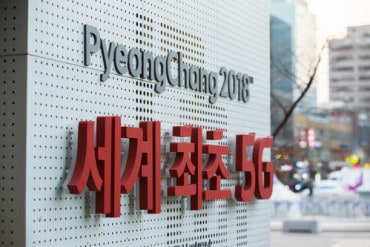
Addressing technical debt is not just a matter of reducing costs; it is about enhancing the overall effectiveness and resilience of an organization’s technology infrastructure.
The rapid evolution of generative AI is transforming the way we approach software development. However, as we embrace new tools such as gen AI code generators, it may be exacerbating a long-time nemesis of IT teams: the proliferation of technical debt.
According to recent studies by McKinsey, addressing technical debt now accounts for 40% of IT budgets, with organizations frequently incurring 10 to 20% in additional costs to manage it. This long-standing challenge has been a focal point for IT and operations leaders as they seek to balance innovation with the long-term sustainability of their technology ecosystems.
Understanding Technical Debt in the Age of AI
But what exactly is technical debt, and how does it relate to generative AI coding? The oft-used buzzword refers to the price paid to fix or maintain software when organizations prioritize speed and short-term gains over long-term, sustainable solutions. As the generative AI hype continues its march, there’s a temptation to use AI-driven code generation as a quick fix to modernize legacy systems. However, this approach can exacerbate the problem rather than solve it.
While it’s tempting to think that generating code faster with the help of AI will resolve issues related to technical debt, this, in reality, only leads to a new wave of challenges. Hastily produced code may lack the thoroughness required to ensure stability and maintainability, resulting in a jumble of temporary fixes. These quick solutions can introduce new bugs and complexities, which only adds to the technical debt pile.
Moreover, patchwork code is often difficult for other developers to manage and understand, creating time-consuming bottlenecks when updates or modifications are needed. This issue is particularly concerning in large organizations where different teams may need to collaborate on the same codebase. The outcome is a cycle where the initial problem is not only unresolved but compounded by the added layers of complexity.
See also: 5 Ways to Lower Technical Debt Through Modernization
Technical Debt and Rethinking the Role of Generative AI
Generative AI’s true value lies not in how much code it can generate but in its ability to strategically enhance business efficiency. By applying AI to streamline and optimize workflows, organizations can unlock new levels of productivity, agility, and innovation. Rather than focusing on sheer code output, businesses should use AI to refine processes—starting with the desired outcomes and working backward. This outcome-driven approach ensures that AI-driven solutions directly support business objectives while minimizing the risk of accumulating technical debt.
One effective strategy is to use generative AI in a manner similar to low-code platforms. By modeling processes early in the development cycle, organizations can avoid the pitfalls of committing to extensive coding before fully understanding the implications. This method encourages a focus on creating systems that are efficient, adaptable, and easy to maintain.
Additionally, generative AI can play a crucial role in evaluating existing workflows. It can identify inefficiencies and suggest improvements, helping to reduce the existing backlog of technical debt over time. By analyzing current processes, AI can provide insights that lead to cleaner, more streamlined code, which is easier to manage and less prone to errors.
Strategic Considerations for IT and Operations Leaders
Addressing technical debt is not just a matter of reducing costs; it is about enhancing the overall effectiveness and resilience of an organization’s technology infrastructure. By actively managing and reducing technical debt, companies can unlock a range of benefits that extend beyond immediate financial savings.
First, reducing technical debt allows IT teams to focus more energy on innovation rather than on the constant upkeep of broken legacy systems. With fewer resources tied up in managing outdated technology, teams can devote more time and effort to developing new features, exploring emerging technologies, and driving business growth. This shift in focus not only fuels innovation but also strengthens the organization’s competitive position in the market.
Second, a simplified and well-maintained codebase is inherently more secure. Complex, tangled code often hides vulnerabilities that can be exploited by malicious actors. By reducing technical debt and streamlining code, organizations can create a more secure environment that better protects sensitive data and critical operations from potential breaches.
And third, effective management of technical debt directly improves the customer experience. Applications that are reliable, with fewer interruptions and faster response times, lead to greater customer satisfaction. Moreover, AI-driven personalization can be more effectively implemented, offering customers tailored experiences that build stronger relationships and drive loyalty.
Harnessing AI for Sustainable Development
For IT leaders, the key to harnessing the power of generative AI lies in leveraging it to create sustainable, efficient systems that promote meaningful innovation. Rather than focusing solely on the volume of code produced, organizations should prioritize the quality, value, and strategic application of AI-driven solutions. This approach not only reduces costs and improves security but also delivers better outcomes for customers and business stakeholders.
Generative AI’s potential is fully realized when it transforms how we approach and manage technology ecosystems. By thoughtfully integrating AI into development processes, organizations can navigate the complexities of technical debt and emerge with more resilient, effective technology solutions. Embracing this mindset will enable IT leaders to balance innovation with sustainability, ensuring that advancements in AI contribute positively to the long-term success of their business.





























